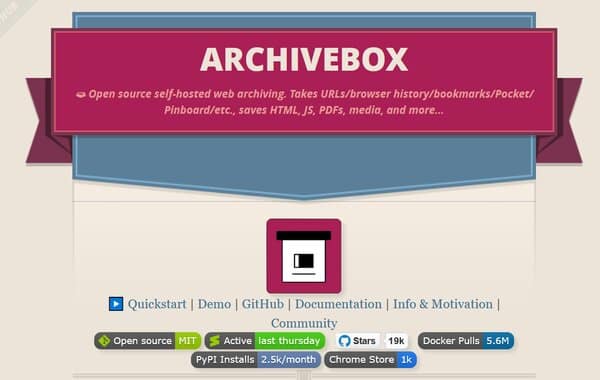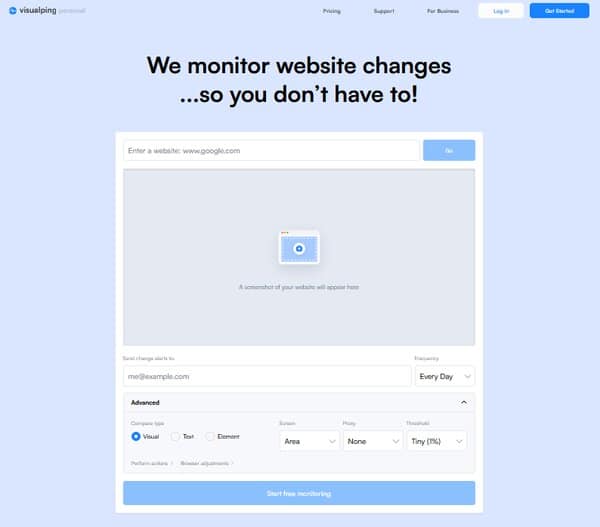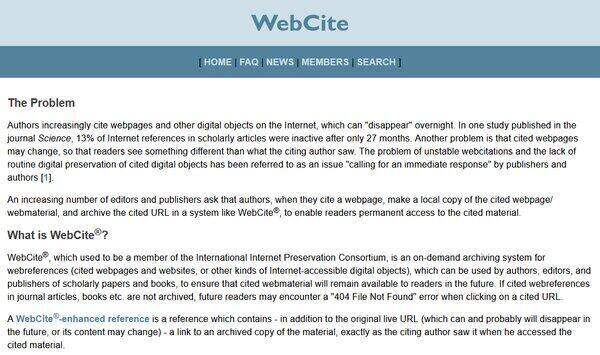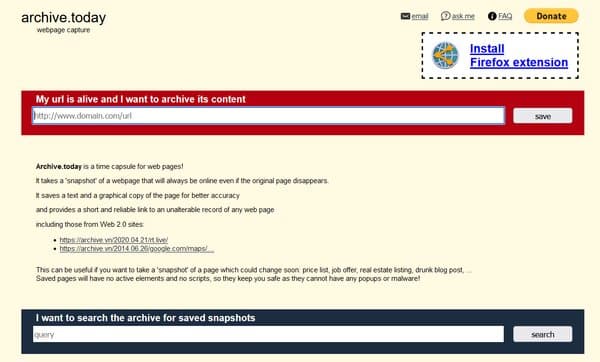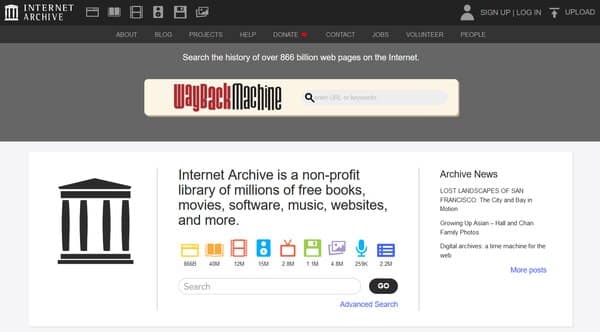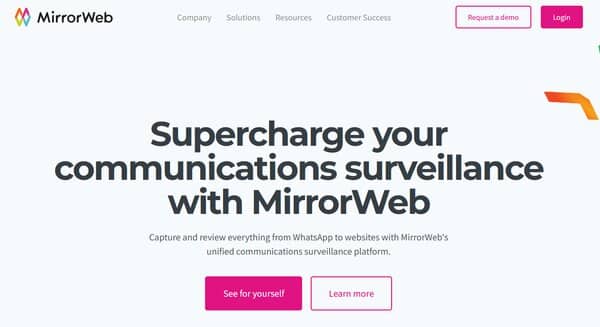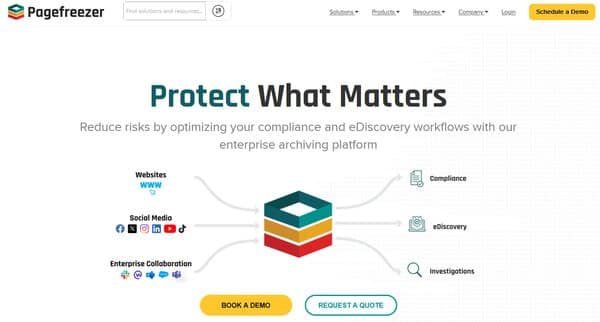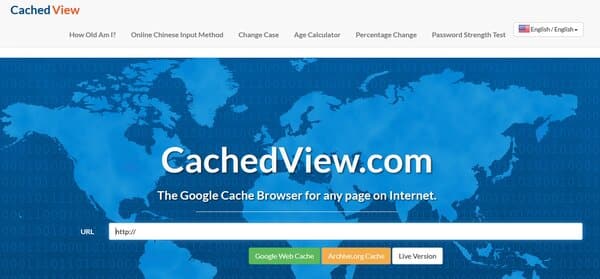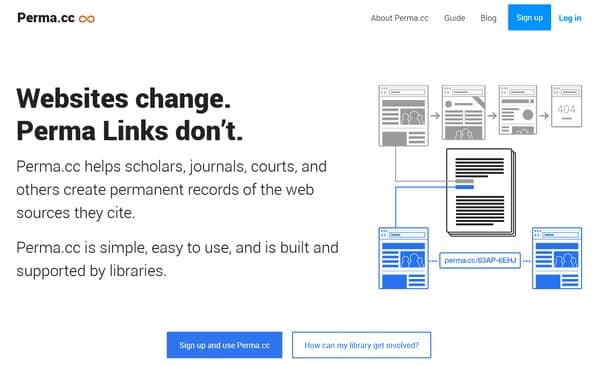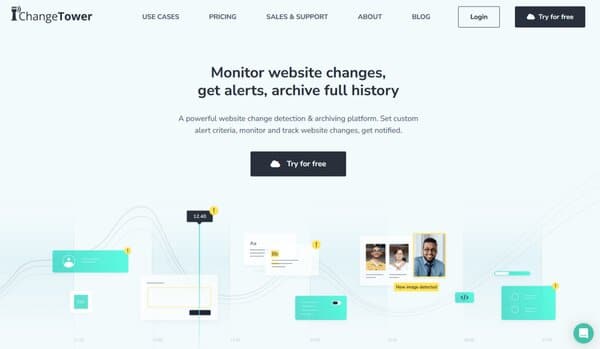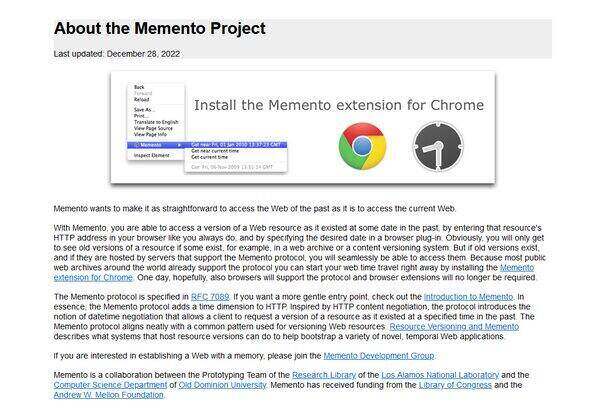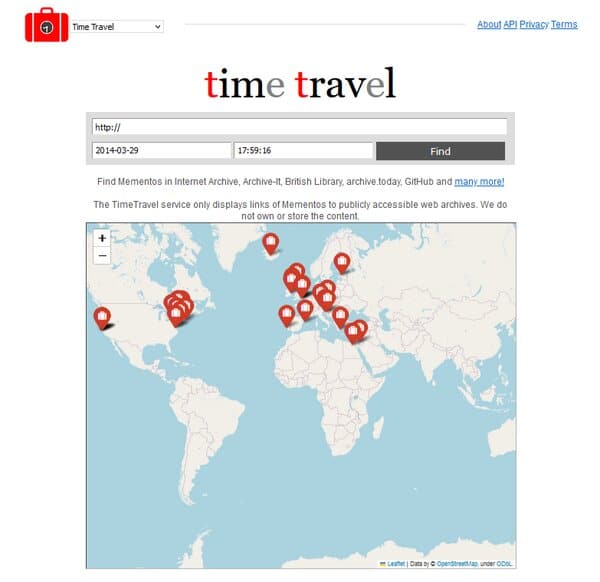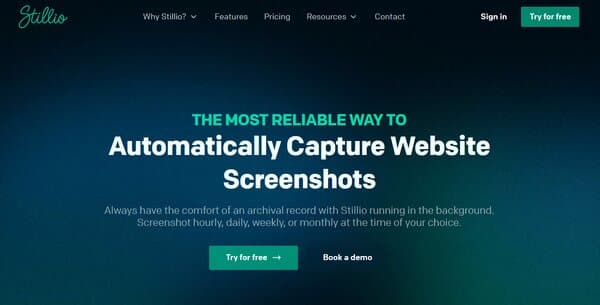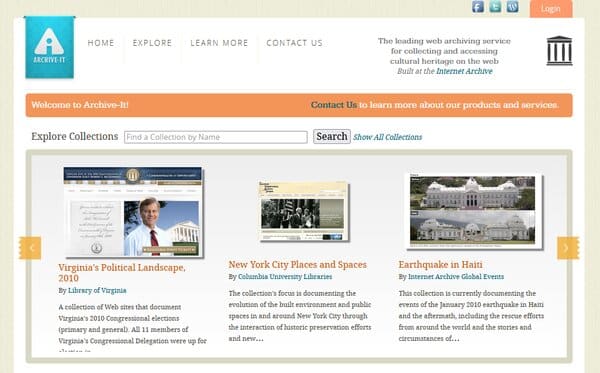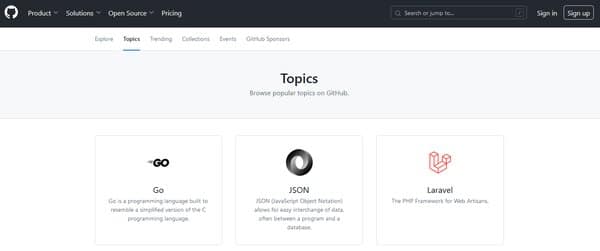15 Best Wayback Machine Alternatives
Wayback Machine Alternatives
The internet is a treasure trove of information, constantly evolving and changing. Amidst this digital transformation, the Wayback Machine has stood as a beacon for those looking to revisit the web’s past. However, there are times when the Wayback Machine may not meet all user needs, prompting the search for Wayback Machine alternatives. These alternatives are not just about looking back, they’re about capturing the essence of web pages for various purposes, from legal compliance to competitive analysis.
The Need for Wayback Machine Alternatives
While the Wayback Machine has archived over 580 billion pages, it’s not without its limitations. For instance, it may not capture every aspect of a webpage or provide the frequency of snapshots that a user might require. In the competitive business landscape, companies often need more detailed and frequent captures for their analysis, which is where alternatives come into play. These Wayback Machine alternatives offer a range of features, from capturing screenshots at user-defined intervals to archiving entire websites for compliance purposes.
Businesses and researchers alike may find themselves in need of more robust Wayback Machine alternatives that can offer additional functionalities such as social media and mobile text archiving, site audits, and detailed insights into customer behavior. For instance, Stillio offers the ability to set capture frequencies and add multiple URLs for paid users, which can be crucial for competitive research or compliance. PageFreezer provides an extensive archiving feature that includes social media and enterprise collaboration, which the traditional Wayback Machine lacks.
Moreover, the digital landscape is not static, it’s a narrative that unfolds over time. Having access to a comprehensive archive that captures this narrative can be invaluable. Whether it’s for legal evidence, academic research, or monitoring brand reputation, the ability to look back and understand the evolution of web content is essential. This is where Wayback Machine alternatives come onto their own, offering tailored services that cater to specific archival needs.
The need for Wayback Machine alternatives stems from the desire for more comprehensive, frequent, and feature-rich web archiving solutions. These alternatives not only provide a window into the past but also equip users with the tools necessary to navigate the complexities of the digital world. Whether it’s for compliance, competitive analysis, or simply curiosity, these services ensure that the rich tapestry of the internet’s history remains accessible and informative.
15 Best Wayback Machine Alternatives
- ArchiveBox
- Visualping
- WebCite
- Archive.today
- Internet Archive
- MirrorWeb
- Pagefreezer
- CachedView
- Perma.cc
- ChangeTower
- The Memento Project
- Memento Time Travel
- Stillio
- Country-Specific Web Archives
- GitHub
How does Wayback Machine Alternatives work?
Wayback Machine alternatives function by archiving the internet, capturing snapshots of web pages at different points in time. These services allow users to access historical versions of websites, even if the original pages have been altered or removed from the live web. Alternatives to the Wayback Machine often offer additional features or focus on specific areas of archiving. For example, some may provide more frequent snapshots, better search capabilities, specialized collections, or enhanced privacy options. By leveraging web crawling technology, these platforms archive a vast array of online content, making it possible for users to research historical web data, track changes over time, or recover lost information.
How to choose Wayback Machine Alternatives?
Choosing Wayback Machine alternatives involves considering several factors and features to ensure the tool meets your specific needs. First, assess the comprehensiveness of the archive. Look for a service that has a broad and deep index of websites and pages, ensuring you have access to a wide range of historical data. The ease of use and accessibility of the platform is another critical factor, a user-friendly interface and effective search functionality can significantly enhance your experience. Additionally, consider the frequency of snapshots to ensure the archive captures web pages at intervals that suit your research or archival needs.
The availability of additional functionalities is also worth considering. Some alternatives offer unique features such as the ability to archive social media content, integration with other tools, or specialized services for academic or legal research. Depending on your requirements, these additional features can be a deciding factor.
Finally, evaluate the cost and accessibility of the service. While some Wayback Machine alternatives are free, others may require a subscription. Determine whether the features offered justify any costs involved. For academic or non-profit use, check if there are special access conditions or discounts available. By carefully considering these parameters, you can select Wayback Machine alternatives that best suit your archiving needs and research objectives.
Wayback Machine Alternative
1. ArchiveBox
ArchiveBox is an open-source, self-hosted web archiving solution that empowers individuals and organizations to collect, save, and view websites for offline access. Unlike centralized web archiving services, ArchiveBox allows users to store data locally, offering a more personalized and secure way to preserve digital content. It supports a wide range of input sources, including browser history, bookmarks, RSS feeds, and social media links, making it versatile for various archiving needs. ArchiveBox is designed to be accessible to both technical and non-technical users, featuring a straightforward setup process and a user-friendly interface for managing archives, making it to the top of the list of the Wayback Machine alternatives.
What does ArchiveBox do?
ArchiveBox takes URLs from multiple sources and archives their content in several formats, ensuring that even dynamic and complex web pages are captured accurately. It uses tools like wget for HTML snapshots, youtube-dl for media content, and a headless Chrome instance for PDFs, screenshots, and DOM dumps. This multi-format approach guarantees that users can access archived content in the most suitable form, whether it’s for research, backup, or preservation purposes. ArchiveBox’s local storage model also means that archives are private and under the user’s control, free from the limitations and privacy concerns associated with cloud-based services.
ArchiveBox Key Features
Comprehensive Input Sources: ArchiveBox can archive content from a wide variety of sources, including browser bookmarks, RSS feeds, and social media platforms. This flexibility makes it an ideal tool for users looking to preserve diverse types of web content.
Multiple Archive Formats: It captures web pages in several formats, such as HTML, PDF, and screenshots, ensuring that dynamic content is preserved in a way that’s true to the original. This multi-format archiving approach enhances the fidelity and usability of the saved content.
Local Storage: All archived data is stored locally on the user’s machine or server, providing full control over the archive’s privacy and security. This feature is particularly appealing for users concerned about data sovereignty and online privacy.
User-Friendly Interface: Despite its powerful capabilities, ArchiveBox is designed with a user-friendly interface that simplifies the archiving process. Users can manage their archives through a web UI, making it accessible even to those with limited technical expertise.
Active Development and Community Support: ArchiveBox benefits from active development and a vibrant community. Users can contribute to its development, report issues, and request features, ensuring that the tool continues to evolve to meet the needs of its user base.
2. Visualping
Visualping is a comprehensive website change monitoring platform that caters to over 2 million users, including a significant portion of Fortune 500 companies. This Wayback Machine alternative is designed to help both individuals and businesses keep track of changes on websites, providing timely alerts and notifications. Whether it’s for monitoring competitor movements, tracking price changes, or staying updated on specific content updates, Visualping equips users with the necessary tools to stay ahead. Its user-friendly interface simplifies the process of setting up monitoring tasks, making it accessible to users with varying levels of technical expertise.
What does Visualping do?
Visualping automates the process of monitoring changes on websites, eliminating the need for manual checks. Users can select specific areas of a webpage to monitor, and Visualping notifies them through email alerts when changes occur. This functionality is crucial for a wide range of applications, from tracking product availability and price adjustments to monitoring news updates and social media profiles. Visualping’s versatility extends to job hunting, house hunting, and keeping an eye on appointment availabilities, making it an invaluable tool for personal and professional use. The platform offers three main types of checks: visual, text, and element checks, each designed to cater to different monitoring needs, ensuring users receive precise and relevant alerts.
Visualping Key Features
Visual Checks: This feature allows users to monitor specific areas of a webpage visually, detecting changes in images, page design, and text appearance. It’s particularly useful for tracking visual updates without getting bogged down by underlying code changes.
Text Checks: Focusing on textual content, this feature alerts users to specific keywords or phrases’ addition, removal, or modification. It’s ideal for monitoring inventory updates or changes in textual information.
Element Checks: By analyzing the underlying code of a webpage, element checks detect changes in web elements, offering a more technical approach to monitoring. This is beneficial for tracking specific elements or components on a page, such as widgets or interactive features.
3. WebCite
WebCite is an on-demand archiving service that was designed to preserve scholarly and educationally significant material on the web. It allows authors, editors, and publishers to ensure that cited web material will remain available to readers in the future, even if the original web pages are altered or removed. This service is particularly valuable in the academic community where the permanence of references is crucial for the credibility and reproducibility of research. WebCite addresses the issue of “link rot” where over time, hyperlinks can lead to dead ends or changed content, which can undermine the integrity of scholarly work.
What does WebCite do?
WebCite provides a way for users to archive web pages and digital objects, creating a permanent record that can be cited in scholarly work. When a user cites a webpage, they can archive the page using WebCite, which takes a snapshot of the page and stores it on their servers. This snapshot includes all the content as it appeared at the time of archiving, such as text, images, and other media. The archived version is then given a unique identifier, or a “permalink,” which can be used in citations to refer to the material reliably. This ensures that even if the original content changes or disappears from the web, the archived version remains accessible for future reference.
WebCite Key Features
On-Demand Archiving: WebCite allows users to archive web pages they wish to cite, ensuring that the content is preserved exactly as it was when they accessed it.
Permanent Record: Once a webpage is archived, WebCite provides a permanent link to the stored content, which can be used in citations to ensure that readers can always access the material.
Snapshot Of Content: The archiving process captures a complete snapshot of the webpage, including text, images, and other media, preserving it in its original form.
Accessibility: Archived content is accessible to readers via the permalink provided, which can be included in scholarly articles, books, and other documents.
Ease Of Use: WebCite offers a straightforward process for archiving web content, making it easy for authors and editors to ensure the longevity of their references.
Support For Scholarly Work: By addressing the problem of link rot, WebCite supports the academic community in maintaining the integrity and reliability of scholarly references.
4. Archive.today
Archive.today is a web archiving service that captures and preserves snapshots of web pages. Unlike other archiving services, Archive.today is unique in its ability to save both the textual and graphical content of a page, ensuring that the archived version is as close to the original as possible. This service is particularly useful for preserving pages that may change over time, become unavailable, or be deleted. It provides a simple and reliable way to keep a permanent record of online content, which can be invaluable for researchers, historians, and anyone interested in the long-term preservation of digital information, making it a great addition to the list of Wayback Machine alternatives.
What does Archive.today do?
Archive.today serves as a digital time capsule, allowing users to create a static and unalterable snapshot of a webpage at a particular point in time. This snapshot includes all the text and images from the original page, providing a comprehensive record of the content as it existed. The service is capable of archiving a wide range of web pages, including those that are dynamic or interactive, and it generates a short URL for each snapshot, making it easy to share and reference. By using Archive.today, users can ensure that valuable or ephemeral online content is preserved, even if the original web page changes or disappears from the internet.
Archive.today Key Features
Text and Image Capture: Archive.today captures both the text and images from web pages, creating a detailed snapshot that mirrors the original content.
Short URL Generation: Each archived page is given a unique, short URL, making it easy to share and access the stored content.
Wide Range of Page Types: The service can archive various types of pages, including those with dynamic content, HTTPS pages, and pages that are typically difficult to capture, such as those blocked by robots.txt rules.
No Script Execution: To ensure safety and prevent issues like pop-ups or malware, Archive.today disables scripts on archived pages, which can affect the functionality of some sites but also serves as a protective measure.
Public Archive List: Archive.today maintains a live feed of all URLs archived, providing transparency and a resource for discovering new or interesting archived content.
Privacy Considerations: The service does not require user registration, and since it archives publicly accessible web pages, there are no inherent privacy concerns with the content being saved.
Support for Various Languages: While primarily in English, Archive.today supports other languages, broadening its accessibility to a global user base.
Non-Reliance on Robots.txt: Unlike some other archiving services, Archive.today does not adhere to the robots exclusion standard, allowing it to capture content that might otherwise be excluded from archiving.
5. Internet Archive
The Internet Archive is a digital library offering free access to a vast collection of digital artifacts and cultural heritage items. Founded in 1996, it aims to provide universal access to all knowledge. The platform archives and preserves the World Wide Web and other digital forms, including books, audio recordings, videos, images, and software. This initiative ensures that historical collections and digital content remain accessible to researchers, historians, scholars, the print-disabled, and the general public for generations to come. By digitizing content that would otherwise be ephemeral or inaccessible, the Internet Archive plays a crucial role in safeguarding the internet’s history and the broader spectrum of human knowledge.
What does Internet Archive do?
The Internet Archive undertakes the monumental task of archiving the internet and providing a comprehensive digital library of various media. It captures and stores websites through its Wayback Machine, allowing users to view historical web pages as they appeared at different points in time. Beyond web archiving, the platform digitizes books, audio recordings, videos, images, and software, making them freely accessible online. The Internet Archive also supports content creators and institutions by offering a platform to upload and preserve digital content, ensuring its availability for future generations. Through these efforts, it serves as a vital resource for preserving digital history, fostering research, and promoting universal access to information.
Internet Archive Key Features
Wayback Machine: The Wayback Machine is a digital archive of the World Wide Web, allowing users to access historical versions of websites. This feature is invaluable for researchers, historians, and the general public interested in the evolution of web content and design.
Digital Library: The Internet Archive’s digital library contains millions of free books, movies, software, music, websites, and more. This extensive collection provides access to a wealth of knowledge and cultural heritage, supporting education and research across various fields.
Open Library: An initiative to create a web page for every book ever published, the Open Library offers millions of digitized books. Users can borrow digital copies of books, contributing to the democratization of access to literature and information.
TV News Archive: This archive offers a searchable database of televised news programs, enabling users to explore how events are covered by different media outlets. It serves as a tool for media analysis, research, and historical reference.
Live Music Archive: A collection of live concert recordings, the Live Music Archive fosters the preservation and sharing of live music experiences. It supports artists and music enthusiasts by providing access to thousands of concert recordings.
Software Collection: The Internet Archive preserves software and video games, making them playable directly in the browser. This collection not only safeguards digital history but also provides nostalgia and educational value by making classic games and software accessible to all.
6. MirrorWeb
MirrorWeb is a cloud-based platform designed to meet the needs of businesses and organizations in archiving web content, social media interactions, and digital communications. It offers a comprehensive solution for capturing, storing, indexing, and replaying digital content, ensuring compliance with regulatory and preservation obligations. MirrorWeb’s technology is tailored for regulated industries, providing a secure and intuitive SaaS platform that supports a wide range of digital archiving needs, from public and gated websites to internal and customer communications across various platforms and channels.
What does MirrorWeb do?
MirrorWeb delivers a robust suite of services aimed at archiving digital content for businesses and organizations. It specializes in capturing a complete record of website content, social media posts, and digital communications in real-time. This includes everything from web pages, images, videos, and metadata to interactions on major social media platforms and messages on platforms like SMS, WhatsApp, WeChat, and Telegram. MirrorWeb’s cloud-based solution ensures that all archived content is immutable, searchable, and stored in compliance with international standards. This makes it an invaluable tool for organizations looking to meet regulatory requirements, preserve digital history, and maintain access to accurate, historical records of their digital presence.
MirrorWeb Key Features
Comprehensive Archiving: MirrorWeb captures all forms of digital content, including web pages, social media posts, and digital communications, ensuring a complete historical record.
Cloud-Native Solution: The platform leverages AWS to provide a scalable, secure, and future-proof archiving solution, offering flexibility and reliability for businesses of all sizes.
Real-Time Capture And Replay: Content is archived in near-real time, preserving the original format and making it easily accessible for review or compliance checks.
Advanced Search Capabilities: With Elasticsearch technology, MirrorWeb indexes all archived content, making it easily searchable for users.
Sophisticated User Portal: The platform offers a user-friendly portal for managing archive settings, searching, and replaying content, enhancing operational efficiency.
Compliance And Regulatory Support: MirrorWeb ensures that all archived content meets international compliance standards, including ISO-standard WARC format storage, aiding organizations in regulatory adherence.
Flexible Device Capture Options: The platform offers options for capturing content from both personal and corporate devices, providing comprehensive coverage for all communication channels.
Public Access Portal: For organizations requiring public access to archives, MirrorWeb offers a proprietary portal that integrates seamlessly with the user portal, ensuring high fidelity access to archived content.
7. Pagefreezer
Pagefreezer is a comprehensive archiving solution designed to help organizations manage and preserve their online content. It offers a robust platform for capturing and storing web pages, social media content, and enterprise collaboration data. Pagefreezer’s services are particularly valuable for sectors that require stringent recordkeeping for compliance, such as government, finance, healthcare, education, and public safety. The platform’s capabilities extend to eDiscovery, facilitating the collection and review of online data, and supporting investigations by generating defensible copies of digital content. Pagefreezer also demonstrates a commitment to social responsibility by partnering with nonprofits to foster a safer online environment.
What does Pagefreezer do?
Pagefreezer provides a suite of services that enable organizations to capture, archive, and monitor their online data across various platforms, including websites, social media, and enterprise collaboration networks. The platform ensures that all online interactions are recorded in real-time, offering a reliable and searchable archive that can be used for compliance, legal, and investigative purposes. Pagefreezer’s tools are designed to handle the dynamic nature of online content, capturing edits, deletions, and interactions to create a comprehensive and defensible record. Additionally, the platform offers advanced search capabilities, real-time alerts, and secure storage, making it an essential tool for organizations looking to manage their online presence responsibly.
Pagefreezer Key Features
Real-Time Archiving: Pagefreezer’s real-time archiving feature ensures that all online activities, including posts, comments, edits, and deletions, are captured as they happen. This allows organizations to maintain an accurate and up-to-date record of their digital interactions.
Advanced Search and eDiscovery: The platform’s advanced search functionality enables users to quickly locate specific content within their archives. This is particularly useful for eDiscovery purposes, where finding relevant information efficiently is crucial.
Compliance and Recordkeeping: Pagefreezer helps organizations meet various compliance requirements by maintaining thorough records of their online data. This includes capturing metadata and preserving content in original file formats.
Legal Hold and Data Retention: The service provides legal hold functionality to protect relevant data from being altered or deleted during litigation. It also allows for the management of data retention schedules, ensuring that information is kept for the required duration.
Security and Privacy: Pagefreezer places a strong emphasis on security, offering features like two-factor authentication, IP whitelisting, and role-based access controls to safeguard archived data.
Monitoring and Alerts: The platform monitors online conversations for sensitive or flagged content, providing real-time alerts to help prevent data loss and inappropriate behavior.
User-Friendly Interface: Pagefreezer’s dashboard is designed for ease of use, allowing users to manage their archives, conduct searches, and export data without requiring extensive technical knowledge.
8. CachedView
CachedView is a versatile online tool designed to provide users with access to cached versions of web pages. This utility is particularly useful in situations where a website is temporarily inaccessible due to server downtime, maintenance, or other issues. By leveraging cached copies stored by search engines like Google, as well as archives from the Internet Archive (Wayback Machine) and Coral CDN, CachedView offers a reliable way to retrieve and view content that might otherwise be unavailable. This capability ensures that users can access information even when the original source is not directly reachable, making CachedView an invaluable resource for researchers, content creators, and the general public seeking uninterrupted access to web content.
What does CachedView do?
CachedView provides a bridge to the past versions of web pages by fetching and displaying their cached copies from various sources. When a website updates its content or goes offline, the most recent snapshots taken by Google’s caching system, the Internet Archive, or Coral CDN can still be accessed through CachedView. This feature is particularly beneficial for retrieving content from sites experiencing temporary outages or for viewing historical versions of a webpage to track changes over time. Additionally, CachedView aids in SEO analysis and competitive research by allowing users to see how a webpage appeared at a specific point, providing insights into content strategies and web design trends.
CachedView Key Features
Google Cache Access: CachedView provides direct access to the Google Cache versions of web pages, enabling users to view content as it was captured during Google’s last crawl. This feature is essential for seeing up-to-date cached content.
Internet Archive Integration: By integrating with the Internet Archive, CachedView allows users to explore historical versions of web pages, offering a comprehensive view of a website’s evolution over time.
Coral CDN Support: The inclusion of Coral CDN as a caching source offers an alternative way to access web content, especially useful when other caching services do not have a recent snapshot of the desired page.
User-Friendly Interface: CachedView boasts a straightforward and intuitive interface, making it easy for users to search for and access cached web pages without the need for advanced technical knowledge.
SEO and Research Utility: For SEO professionals and researchers, CachedView is an invaluable tool for analyzing the past content and structure of websites, aiding in competitive analysis and historical research.
9. Perma.cc
Perma.cc is a web archiving service developed by the Harvard Library Innovation Lab, designed to combat link rot by allowing users to create permanent, citable links to web pages. This service is particularly valuable in academic, legal, and scholarly contexts where the reliability and permanence of cited sources are paramount. By capturing and storing snapshots of web pages at the time of citation, Perma.cc ensures that future readers can access the content as it originally appeared, even if the live web page becomes altered, moved, or deleted. This addresses a significant challenge in digital scholarship and legal documentation, where the ephemeral nature of web content can undermine the integrity of citations and the reproducibility of research.
What does Perma.cc do?
Perma.cc offers a straightforward yet powerful solution to the pervasive problem of link rot in digital citations. Users can submit URLs of web pages they wish to cite, and Perma.cc captures a snapshot of the page, creating a permanent record that is stored on its servers. These records are then accessible via a unique Perma.cc URL, which can be used in citations to ensure that readers always have access to the content as it was when originally cited. This service is especially crucial for academic journals, legal documents, and any publications that rely heavily on web-based sources. Perma.cc supports both individual and organizational accounts, catering to a wide range of users from students and researchers to libraries and courts. By preserving the integrity of web citations, Perma.cc plays a critical role in maintaining the quality and reliability of digital scholarship and legal documentation.
Perma.cc Key Features
Browser Extensions and Bookmarklet: These tools simplify the process of creating Perma links directly from your web browser, making it more efficient to archive web pages without interrupting your research workflow.
Batch Link Creation: This feature allows users to archive multiple web pages at once, significantly saving time for projects that require extensive citation of online sources.
Private and Public Link Options: Users have the control to set archived links as private for personal or internal use, or public for sharing with a wider audience, providing flexibility in how archived content is accessed and utilized.
Organizational Accounts: Perma.cc offers organizational accounts, enabling institutions like libraries, academic journals, and courts to manage link creation and archiving at a larger scale, which is essential for collaborative projects and institutional archiving needs.
PDF Archiving: In addition to web pages, Perma.cc can archive PDF documents available online, ensuring that these resources remain accessible even if the original web location is no longer available.
Customizable Folders: Users can organize their Perma links into folders, making it easier to manage and retrieve archived content for different projects or research topics.
Screenshot and WARC File Formats: Perma.cc saves archives in both screenshot format for quick visual reference and Web ARChive (WARC) file format for comprehensive preservation, catering to diverse needs for accessing and using archived content.
10. ChangeTower
ChangeTower offers a robust solution for individuals and businesses needing to monitor web pages for changes. This cloud-based platform provides a suite of tools to track visual, text, keyword, image, and HTML changes, ensuring users are promptly alerted to updates that are significant to them. ChangeTower’s capabilities extend to archiving full-page visual screenshots, text-based content snapshots, and source code, making it a comprehensive choice for those who require detailed documentation of website changes over time.
What does ChangeTower do?
ChangeTower is a vigilant digital lookout, keeping an eye on websites for any alterations. Users can specify exactly what elements of a webpage they wish to monitor, whether it’s visual changes, keywords, sentences, or code updates. The platform is designed to send notifications based on custom alert criteria set by the user. This means that whether you’re tracking competitor movements, monitoring for compliance, or keeping tabs on critical content updates, ChangeTower can provide timely and relevant alerts. The service is particularly useful for SEO monitoring, ensuring that key website components remain compliant and detecting unauthorized changes, potentially safeguarding against malicious activities.
ChangeTower Key Features
Custom Alert Criteria: ChangeTower allows users to create advanced sets of criteria to monitor specific elements of a web page, providing notifications only when those particular changes occur.
Visual and Text Change Monitoring: The platform can track both visual and text changes, offering users the ability to monitor for specific images, keywords, or even code snippets, ensuring that they are aware of all relevant updates.
Real-Time Notifications: Users receive alerts as soon as ChangeTower detects a change that matches their settings, allowing for immediate action or review.
Archiving: ChangeTower captures and stores time-stamped snapshots of web pages, enabling users to reference and compare historical data for a comprehensive understanding of changes over time.
Team Collaboration: The platform supports the ability to notify multiple team members of changes, facilitating efficient communication and response within organizations.
SEO Performance Monitoring: Users can gain insights into competitor rankings and receive notifications of updates that could affect their SEO strategy.
Comprehensive Reporting: ChangeTower provides detailed change reports, making it easier for users to locate and analyze the most significant updates.
Cloud-Based Platform: Being cloud-based, ChangeTower offers a reliable and always-on service that can be accessed from anywhere, ensuring constant monitoring without the need for local resources.
11. The Memento Project
The Memento Project is an innovative initiative designed to bridge the gap between the present and past web. It leverages the Memento protocol, a technical framework that adds a temporal dimension to the HTTP protocol, allowing users to access archived versions of web pages as they existed at a specific point in the past. This project is a collaborative effort between the Research Library of the Los Alamos National Laboratory and the Computer Science Department of Old Dominion University, supported by funding from the Library of Congress and the Andrew W. Mellon Foundation. The Memento Project aims to make web archives as easily accessible as the current web, facilitating a seamless journey through the web’s history without the need for specialized knowledge or tools.
What does The Memento Project do?
The Memento Project revolutionizes the way we access historical web content by making it straightforward to navigate to past versions of web pages directly from the current web. By integrating the Memento protocol into web browsers through extensions, users can specify a desired date and access archived versions of web pages as if they were navigating the current web. This is made possible through datetime negotiation, a process inspired by HTTP content negotiation, which allows for the retrieval of web resources as they existed at a specified past time. The project significantly enhances the accessibility of web archives, supporting a wide range of public web archives globally. This initiative not only serves as a tool for accessing the web’s past but also contributes to the broader goal of establishing a web with a memory, encouraging the preservation and accessibility of digital history.
The Memento Project Key Features
Datetime Negotiation: This core feature introduces the concept of temporal content negotiation to HTTP, enabling users to request and access a version of a web resource as it existed at a specific point in the past.
Browser Extension: The Memento extension for Chrome transforms the browser into a time machine, allowing users to seamlessly navigate between the present and past versions of the web without leaving their browser environment.
Support For Public Web Archives: Memento works in conjunction with a wide array of public web archives around the world, ensuring broad access to archived web content across different regions and time periods.
Integration With Content Versioning Systems: Beyond web archives, Memento also aligns with systems that host versioned web resources, facilitating the development of temporal web applications and services.
Open Collaboration: The project encourages participation and contributions from the wider community, offering opportunities for developers and researchers to join the Memento Development Group and contribute to the evolution of web archiving technologies.
12. Memento Time Travel
Memento Time Travel is an innovative service that caters to the needs of digital historians, researchers, and anyone interested in the evolution of web content. It provides a gateway to the past, enabling users to access archived versions of web pages across different points in time. This service is particularly valuable for those looking to understand the historical context of web-based information or to retrieve content that is no longer available on the live web.
What does Memento Time Travel do?
Memento Time Travel is a great Wayback Machine alternative that allows users to retrieve “Mementos”—archived versions of web pages from various dates in the past. This is achieved through the Memento protocol, which facilitates time-based access to resource states. Users can input a URL and a target date, and Memento Time Travel will attempt to provide a version of the web page from around that time. This capability is essential for preserving the digital heritage and for providing verifiable references to past web content, which is crucial for academic research and legal purposes.
Memento Time Travel Key Features
Datetime Negotiation: Memento Time Travel employs datetime negotiation, allowing users to request web page versions from specific past dates. This feature is akin to setting a time machine to a desired date and exploring the web as it existed then.
TimeMap Resource: At the core of Memento Time Travel is the TimeMap resource, a document that lists the original resource, its TimeGate, and its Mementos, along with metadata such as archival DateTime for Mementos. This comprehensive resource is instrumental in navigating the archived web.
Broad Archive Support: The service taps into a wide array of Memento-compliant web archives and version control systems, ensuring extensive coverage and increasing the likelihood of retrieving a desired past web state.
User-Friendly Interface: Memento Time Travel offers an intuitive interface that simplifies the process of finding and viewing past versions of web pages, making web time travel accessible to a broad audience.
API Access: For developers and researchers, Memento Time Travel provides an API, enabling programmatic access to its time travel capabilities and facilitating integration with other tools and services.
Browser Extension: To enhance user experience, there is a browser extension available that integrates Memento’s time travel functionality directly into the web browsing experience, allowing for seamless navigation between the past and present web.
Research Utility: The service is not only a tool for curiosity but also a robust platform for academic research, providing a means to analyze the evolution of web content and its impact over time.
13. Stillio
Stillio is a web-based service designed to automate the process of capturing and archiving website screenshots. It caters to a wide range of users, from SEO professionals tracking their web page rankings across different search engines to businesses needing to maintain records for compliance purposes. Stillio simplifies the task of taking manual screenshots, offering a set-and-forget solution that operates in the background, capturing images of web pages at specified intervals. This tool is celebrated for its ease of use, requiring minimal setup to start archiving web pages hourly, daily, weekly, or monthly. With a customer base spread over 50 countries, Stillio has established itself as a reliable tool for creating a visual archive of digital content, ensuring that users have perpetual access to their screenshots, all neatly organized in one place.
What does Stillio do?
Stillio automates the task of taking screenshots of web pages at regular intervals, serving a variety of purposes from SEO tracking to compliance proof and intellectual property protection. It eliminates the need for manual screen captures, offering a hassle-free solution to archive web content over time. Users can schedule screenshots at their preferred frequency, ensuring a comprehensive visual record of their digital presence or that of competitors. This tool integrates seamlessly with popular cloud storage services like Google Drive and Dropbox, facilitating easy organization and access to archived images. Additionally, Stillio supports customization options such as tagging and setting custom user agents, enhancing the relevance and utility of the captured screenshots for specific use cases. Its simplicity, combined with powerful archiving capabilities, makes Stillio an invaluable asset for anyone looking to maintain an accurate and accessible record of web content changes.
Stillio Key Features
Automated Screenshot Scheduling and Management: Stillio allows users to automate the process of capturing screenshots, eliminating the need for manual intervention. Users can set the frequency of screenshots according to their needs, ranging from hourly to monthly intervals.
Integration with Cloud Storage Services: This feature enables users to automatically save and organize their screenshots in the cloud storage platform of their choice, such as Google Drive or Dropbox. This ensures that screenshots are easily accessible and can be managed efficiently.
Customizable Tagging System: Stillio offers a tagging system that helps users organize their screenshots effectively. By tagging screenshots, users can quickly find and retrieve specific images, making it easier to demonstrate compliance or review changes over time.
Full-Page and Responsive Website Captures: Stillio is capable of capturing the entire length of a webpage in a single screenshot, including responsive websites across multiple devices. This ensures that users have a complete visual record of their web content as it appears on different screens.
Custom User Agent and Cookies: Users can mimic different browsers or devices by setting a custom user agent, optimizing the screenshots for specific viewing contexts. Additionally, custom cookies can be passed along to tailor the screenshot outcome further.
Element Interaction Before Capturing: Stillio provides options to interact with web page elements before taking a screenshot, such as clicking buttons or hiding certain elements. This feature is particularly useful for capturing web pages without unwanted overlays or pop-ups.
14. Country-Specific Web Archives
Country-Specific Web Archives are digital collections that focus on preserving web content relevant to specific nations or regions. These archives serve as a crucial resource for capturing the digital heritage and online cultural expressions of individual countries. By concentrating on a particular geographic area, these archives ensure that the digital presence and evolution of a country’s government, organizations, educational institutions, and social movements are documented for future generations. They provide a snapshot of a nation’s digital landscape at various points in time, which is invaluable for researchers, historians, and the public interested in the socio-political and cultural context of a specific region.
What does Country-Specific Web Archives do?
Country-Specific Web Archives perform the vital task of selectively capturing and preserving web content that is of national significance. They employ web crawling technology to archive websites, social media, and other digital content that reflects a country’s political, social, and cultural environment. These archives are often created and maintained by national libraries or other governmental institutions with the mandate to safeguard the country’s digital heritage. By doing so, they provide a repository of information that can be used for research, education, and policy-making, ensuring that the digital footprint of a nation’s key moments and movements is not lost to time.
Country-Specific Web Archives Key Features
Selective Archiving: Country-Specific Web Archives prioritize content that holds cultural, historical, or governmental importance to a particular nation. This selective process ensures that the most relevant digital content is preserved.
Cultural Preservation: These archives play a crucial role in maintaining the digital aspects of a country’s cultural heritage, including language, arts, and traditions, which might otherwise be lost in the fast-paced evolution of the internet.
Research and Education: By providing access to archived digital content, these archives become invaluable tools for researchers and educators looking to study the historical context and development of a nation’s online presence.
Legal and Historical Record: In some cases, the content preserved in Country-Specific Web Archives can serve as a legal record or evidence of governmental and social changes, making them important for accountability and transparency.
Accessibility: While ensuring the preservation of digital content, these archives also focus on making the information accessible to the public, often through user-friendly interfaces that allow for easy navigation and retrieval of archived materials.
15. GitHub
GitHub is an online platform that serves as a hub for software development, offering a wide array of features to facilitate collaboration, version control, and code management. It provides a cloud-based environment where individuals and teams can store, manage, and track changes to their code projects. GitHub supports both public and private repositories, making it a versatile choice for open-source projects as well as proprietary code. The platform integrates seamlessly with various tools and services, enhancing productivity and enabling developers to automate workflows through GitHub Actions. Additionally, GitHub fosters a vibrant community where developers can contribute to each other’s projects, share insights, and collaborate on software development challenges.
What does GitHub do?
GitHub acts as a central repository hosting service, allowing developers to upload their code to the cloud where it can be universally accessed, worked on, and shared with others. It leverages Git, a distributed version control system, to track changes and manage versions of a project, enabling multiple developers to work on the same codebase simultaneously without conflicts. GitHub simplifies the process of contributing to open-source projects and facilitates code review and collaboration through pull requests and issue tracking. It also offers GitHub Actions for CI/CD automation, enabling developers to automate their build, test, and deployment workflows directly within GitHub’s ecosystem. Furthermore, GitHub provides project management tools, such as project boards and milestones, to help teams organize tasks, track progress, and achieve their development goals efficiently.
GitHub Key Features
Version Control: GitHub utilizes Git, a powerful version control system, to track and manage changes to code projects. This allows developers to revert to previous states, compare changes over time, and ensure that the history of their project is well documented and accessible.
Collaboration: The platform enhances teamwork through features like pull requests and code reviews, enabling developers to discuss changes, request feedback, and refine their code in a collaborative environment.
GitHub Actions: This CI/CD feature automates workflows, allowing users to build, test, and deploy their applications directly within GitHub. Actions make it easier to integrate continuous integration and continuous deployment practices into the development process.
Project Management Tools: GitHub provides project boards, issues, and milestones to help teams organize their work, track progress, and manage tasks efficiently. These tools support agile development methodologies and streamline project coordination.
Security Features: With features like automated security fixes and dependency reviews, GitHub helps maintain the security and integrity of code projects. It alerts developers to vulnerabilities and provides tools to address them promptly.
Community and Networking: GitHub hosts a vast community of developers, making it an ideal platform for open-source projects. Developers can contribute to existing projects, discover new technologies, and connect with other professionals in their field.
Integration and Extensibility: The platform offers a wide range of integrations with third-party tools and services, enhancing its functionality. Developers can customize their workflow, connect with external systems, and extend GitHub’s capabilities through the GitHub Marketplace.
FAQs on Wayback Machine Alternatives
What is a Wayback Machine Alternative?
A Wayback Machine alternative refers to any service or tool that offers similar functionalities to the Wayback Machine, which is a digital archive of the World Wide Web. These alternatives are designed to capture, archive, and retrieve web pages and websites at different points in time, allowing users to view historical versions of the internet. Unlike the Wayback Machine, which is a part of the Internet Archive, alternatives might offer additional features such as more advanced search capabilities, better user interfaces, or specialized archiving options for specific types of content like social media or dynamic web pages.
How do Wayback Machine Alternatives Work?
Wayback Machine alternatives operate by using web crawling and archiving technology to systematically visit and capture snapshots of web pages. These snapshots are then stored in a database, creating a historical archive of the web page’s content. Users can access these archives through a web interface, where they can search for specific web pages using URLs, keywords, or dates. Some alternatives might offer additional functionalities such as the ability to archive entire websites, capture dynamic content, or provide tools for legal and compliance purposes. The core principle behind these services is to preserve the digital heritage of the internet, making it possible for users to access information that may no longer be available on the live web.
What are the Benefits of Using Wayback Machine Alternatives?
Using Wayback Machine alternatives can provide several benefits, including:
- Enhanced Features: Some alternatives offer features not available in the Wayback Machine, such as more precise archiving intervals, better handling of dynamic content, or integration with other tools and platforms.
- Specialized Archiving: Certain alternatives focus on specific types of content, such as social media posts or corporate websites, providing more tailored archiving solutions.
- Improved Accessibility: Alternatives might offer more user-friendly interfaces, making it easier for users to find and view archived content.
- Backup Options: Having access to multiple archiving services ensures that users can find historical content even if one service is temporarily unavailable or does not have the desired snapshots.
- Compliance and Legal Use: Some alternatives are designed to meet legal and compliance requirements, offering features like certified timestamps and secure storage for archived content.
What Should You Look for in a Wayback Machine Alternative?
When choosing a Wayback Machine alternative, consider the following factors:
- Archiving Capabilities: Evaluate the service’s ability to accurately capture and archive the types of web pages or content you are interested in.
- Search and Retrieval: Look for services that offer robust search functionalities, making it easy to find specific snapshots based on URL, date, or keywords.
- User Interface: A user-friendly interface can significantly enhance your ability to navigate and use the service effectively.
- Special Features: Consider any additional features that might be beneficial for your specific needs, such as API access, integration with other tools, or specialized archiving for certain types of content.
- Cost: While some alternatives are free, others may require a subscription. Assess the cost relative to the features and benefits provided.
Conclusion
Wayback Machine alternatives play a crucial role in digital preservation, offering tools and services to capture, archive, and retrieve historical versions of web pages and websites. Whether for research, nostalgia, legal compliance, or simply exploring the evolution of the internet, these alternatives provide valuable resources beyond what the Wayback Machine offers. By considering factors such as archiving capabilities, search functionalities, user interface, special features, and cost, users can select the most suitable alternative to meet their specific needs.

